Lightning-speed connectivity is something many of us take for granted, as also the ability to connect anywhere, anytime using our mobile networks. However, we are only a gifted fraction of the world’s population. Describing an image of the Earth’s wireless data coverage (2G, 3G, 4G and beyond), shown by Facebook’s chief technology officer Mike Schroepfer at their F8 conference, Mark Andersen of Air & Space/Smithsonian magazine wrote, “The image looks like that famous ‘Earth at night’ NASA photo montage, revealing patches of the planet where artificial illumination shines brightly in the dark, leaving vast stretches of Earth’s landmass in darkness.” Plain truth, because only 40 per cent of the world’s population is connected to the Internet!
The Internet is as important to the remaining folks. It could mean better healthcare, livelihood, safety and a lot more. Sadly, it is difficult to connect them. How do you connect indomitably-tall peaks or barren dessert lands, places that have limited power supply and experience harsh weather conditions?
We do not need to be economics gurus to guess that no telecom company will be ready to lay cables or erect a bunch of mobile towers where population is so sparse that their investment will not be justified.
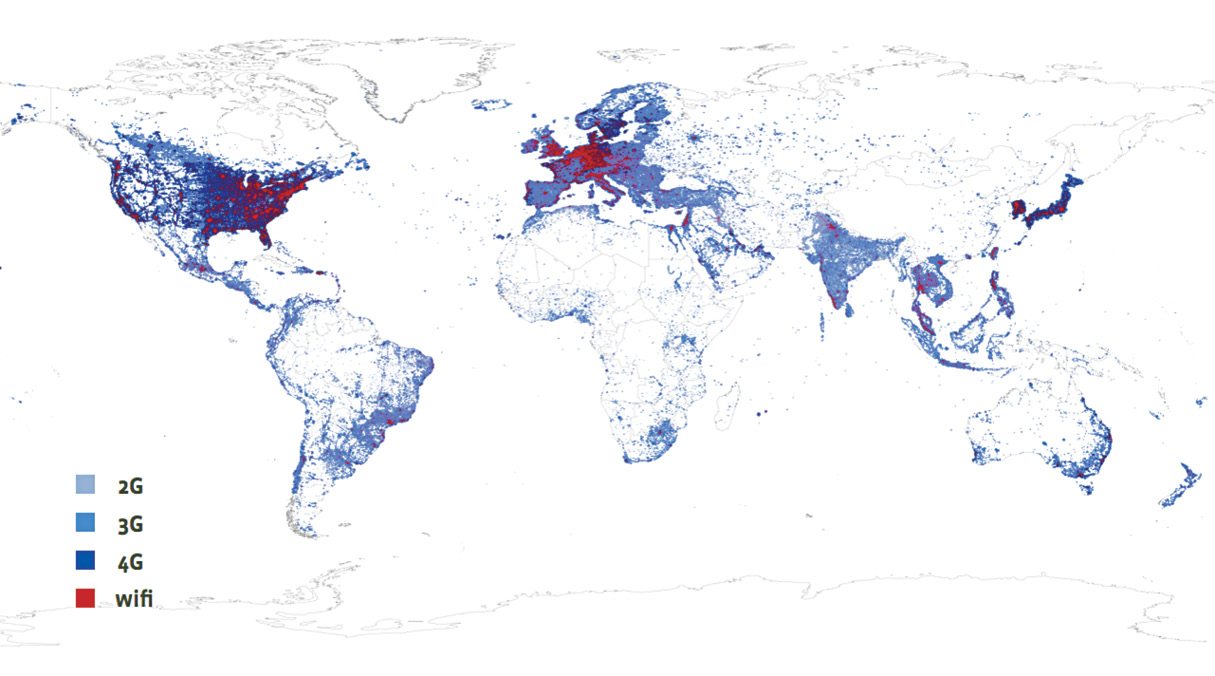
Today, we seem poised to change all this because tech companies across the world, ranging from Google and Facebook to Saankhya Labs, seem upbeat about connecting the rest of the world. Either because it would make business sense to them or as a social responsibility, they are now investigating off-beat connectivity options like low-orbit satellites, solar-powered balloons and drones that act as mobile towers, self-powered Wi-Fi and chips that make use of television white space.
Join us as we explore this wonderful world that promises a better, safer life for the unconnected billions (popularly termed as the other three billion)!
Google is flying balloons…
Let us begin with the story of how sheep farmer Charles Nimmo, from Leeston, which is a small town in New Zealand, got connected to the Internet in 2013, and how many more are slated to be connected in the years to come. The answer is Project Loon, a loony-sounding but sensible project by Google.
Google’s idea is to use a network of balloons to provide connectivity to the remote parts of the Earth, without spending exorbitantly on terrestrial infrastructure. The helium-filled balloons are launched into the stratosphere, where these fly around 20km above the Earth’s surface. In the stratosphere, wind mainly moves in horizontal layers, and not up and down. This makes it easy to steer the balloons dynamically using software, pushing these into the required layers to form a network of balloons. The balloons stay aloft for a few months, after which these are steered to collection points on the Earth and replaced.
Each balloon carries a box containing circuit boards to control the system, and radio antennae to communicate with other balloons and with Internet antennae on the ground. There are also lithium-ion batteries to store solar power, generated by an array of solar panels, mounted on a light aluminium frame, which flies with the balloon. With all this, the balloons provide Long-Term Evolution (LTE) based connectivity to a ground area of 80km diameter, by sharing the mobile spectrum with telecommunications companies.
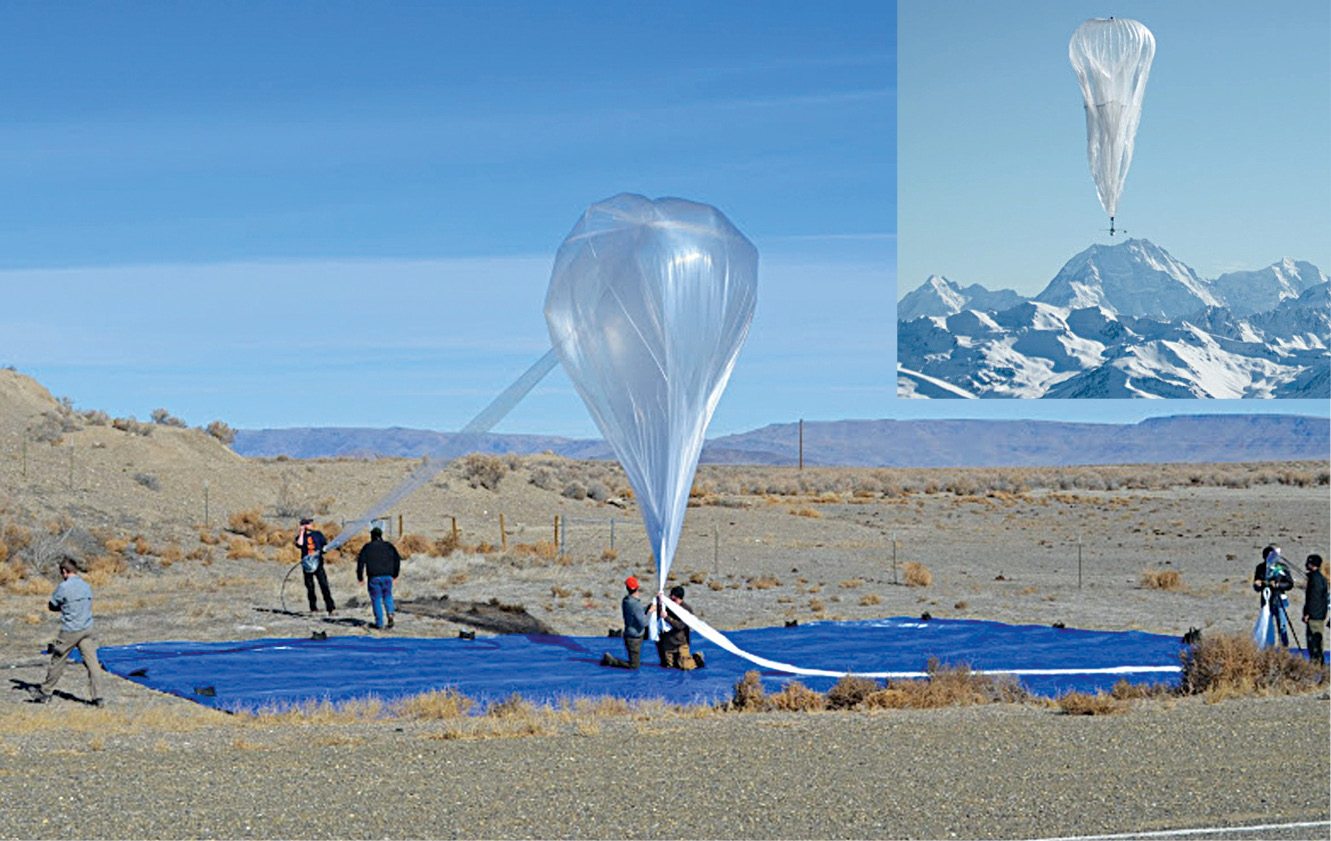
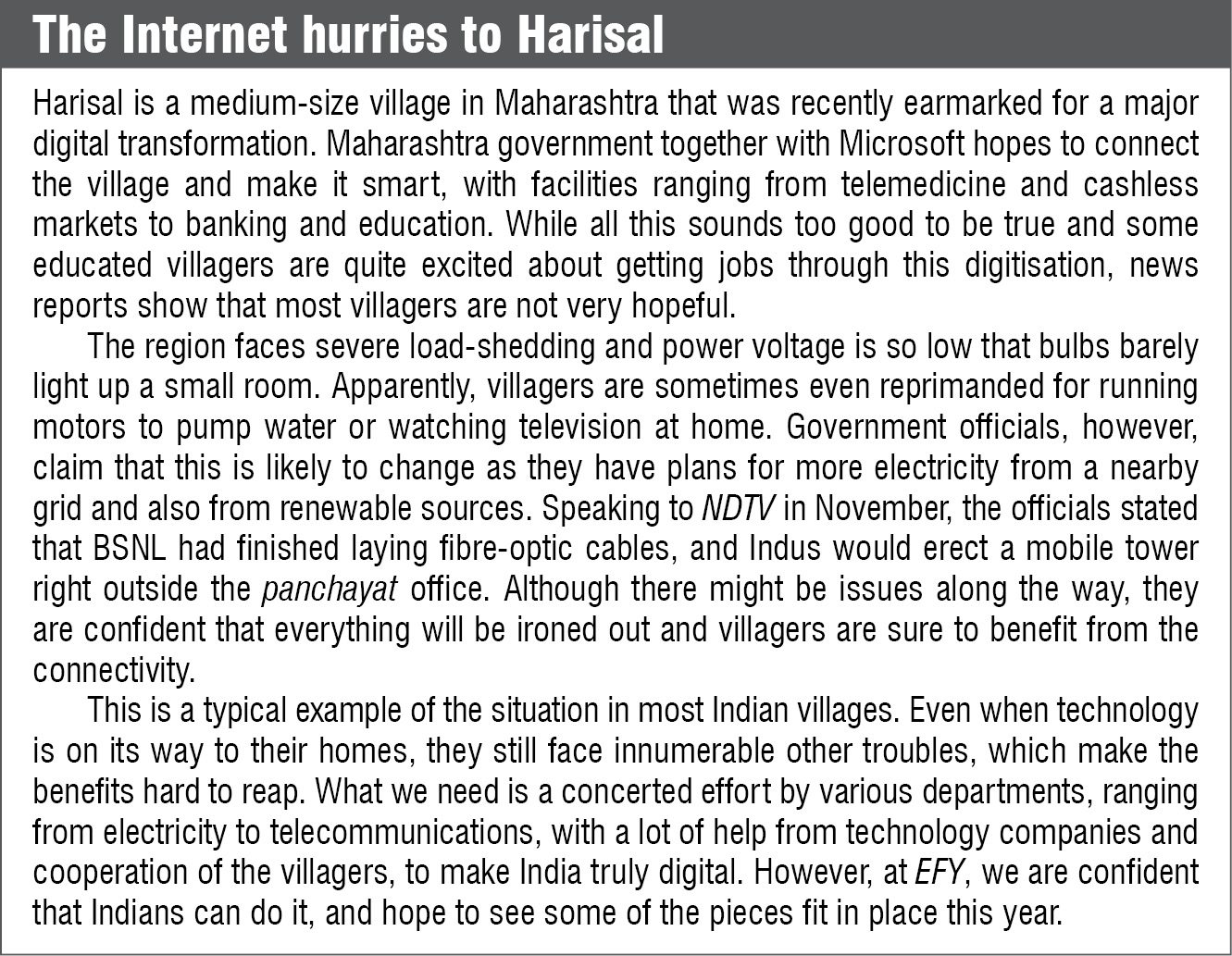 People can connect to the balloon network directly from their phones and other LTE-enabled devices. The signal is then passed across the balloon network and back down to the global Internet on the Earth. This ability to use standard mobile devices to connect is what makes Project Loon appear more attractive than satellite or white space based systems that require special devices.
People can connect to the balloon network directly from their phones and other LTE-enabled devices. The signal is then passed across the balloon network and back down to the global Internet on the Earth. This ability to use standard mobile devices to connect is what makes Project Loon appear more attractive than satellite or white space based systems that require special devices.
Loon has been tested successfully in remote parts of New Zealand, California’s Central Valley and northeast Brazil, and is soon expected to be tested over Indonesia and Sri Lanka, too.
However, the project is not without problems. Dr Suresh Borkar, telecom consultant and member of faculty at Illinois Institute of Technology, Chicago, remarks, “Google’s Project Loon, being based on a comparatively unpredictable and unreliable approach of using balloons in the stratosphere, is likely to stay in the experimental and prototype stage, as evidenced by the fact that Google, its primary innovator, has also invested heavily in satellite based initiatives!”
… While Facebook wants to play with drones
As of now, Facebook’s efforts seem to be three-pronged. There is Free Basics, an open platform to provide basic Internet services like news, maternal health, travel, local jobs, sports and communications, for free, to people who cannot afford it. The problem with this is that, it depends on existing mobile networks, and can therefore not go everywhere.
Then, there is Innovation Lab, which helps developers understand network conditions across the world, enabling them to ensure proper functioning and good performance in all geographies.
However, the most interesting part of this effort—as far as this story is concerned—is Connectivity Lab, which aims to provide affordable Internet access to remote, sparsely-populated areas, using technologies like drones, satellites, mesh networks, radios and free space optics (FSOs).
In a white paper titled ‘Connecting the World from the Sky,’ Facebook authors explain that different technologies work for different population densities. While wireless mesh networks might work in dense, urban environments, medium-density areas could be connected with unmanned, high-altitude and solar-powered aircraft that have long endurance.
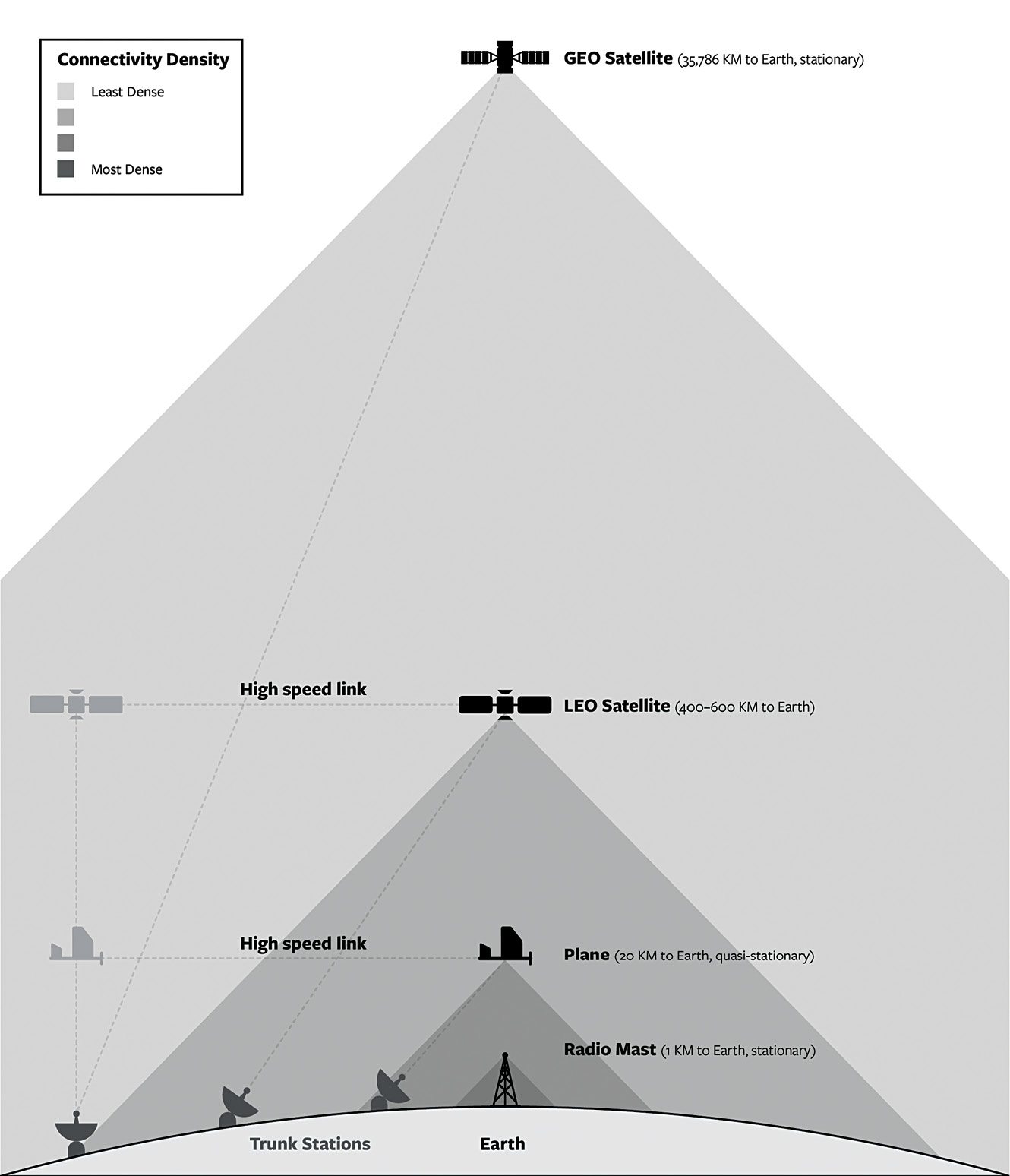
For sparsely-populated and difficult terrains, satellites that beam Internet access to the ground are probably the only solution. Although satellite based solutions are expensive today, the company keeps its hope high as space based methods of connectivity are becoming smaller and cheaper to launch.
Boosting speed. Facebook is exploring the use of FSOs to boost the speed of Internet connectivity. According to the white paper, “FSO is a way of using light to transmit data through space. These are basically invisible laser beams in the infrared part of the spectrum.”
Whatever be the connectivity platform, FSO can help boost the speed. Apparently, the lasers used in FSO systems provide extremely high bandwidths and capacity comparable to terrestrial fibre-optic networks while consuming very little power. However, there are some challenges in accurately orienting its narrow optical beams, which must be overcome before an FSO can be used to the user’s benefit.
“An FSO is appropriate for inter-satellite (backbone) connectivity and may be impractical for access to user devices. For communication with user devices, there are issues relating to sending narrow beams, additional hardware and software in both the user device and the satellite, keeping the beam aligned when the user moves, additional optical circuitry, optics/electronics interfaces and so on. These are not just challenges but involve significantly more cost and complexities especially in user devices. Also, key proposals of sharing the spectrum with mobile systems for access will not be possible,” explains Dr Borkar.
High-altitude drones. Facebook’s drone idea sounds very similar to Google’s balloons. Just that they chose drones instead of balloons because they have more endurance and can also be steered more accurately. At an altitude of around 20km above ground, solar-powered drones would be able to cruise easily and conserve power, and broadcast signals powerful enough to cover a city-size territory with a medium population density.
A high-profile team is working to finalise the communication equipment payload of the drones and also figure out how FSOs can be used to make the solution more effective. Once again, Dr Borkar helps tone down our expectations: “The drones will be flying at lower levels than the satellites. Hence, the number of drones will be significantly larger than satellites to provide continuous coverage, which will likely be approximately six or seven times. This creates major issues including path control for drones, handovers and network management.”
Peak or trough, satellites will reach you
Since decades, satellites have proved their usefulness in connecting remote areas. But, due to the heavy costs involved, these have been used more for military and commercial purposes than for civilian communications. Plus, traditionally, geostationary-Earth orbit (GEO) based systems have had major latency issues because of the large distance of links, making these useless for real-time applications like voice-conferencing, video-conferencing, machine-to-machine (M2M) communications and cloud computing.
However, in recent times, companies like SpaceX, OneWeb and O3b Networks have started promising affordable, high-speed communications with satellites in low- and medium-Earth orbits (LEO and MEO, respevtively).
[stextbox id=”info”]India is the third-largest Internet user base in the world, comprising around eight per cent of the world’s Internet users, which is less than 20 per cent of our population (Courtesy: www.internetlivestats.com/internet-users-by-country)[/stextbox]
SpaceX. This company hopes to put in place a 4000-satellite network in LEO by 2030, and if this really happens, all you would need is a handy receiver to connect from just about any spot on the Earth.
Satellites have always been costly business, and SpaceX plans to change this. One of the major cost-points is the rocket, which goes up in flames on re-entry, so it can be used only once. So the company’s scientists are now trying to develop a reusable rocket, which puts the satellite in space and returns to a barge, from where it is can be safely steered to shore and reused. They also plan to make smaller, lighter satellites, so that the overall cost will make more economic sense than laying fibre-optic cables.
OneWeb. OneWeb, backed by big names like Virgin Group, Qualcomm, Airbus Group, Coca Cola and Bharti Enterprises, has its own share of game-changing plans to launch around 650 Internet-providing LEO satellites at 800km and 950km, by 2018. Its satellites are designed with lesser components and with a lighter weight, so these can be mass manufactured and also launched easily.
Another notable aspect is their patent-pending Progressive Pitch technology, which enabled them to gain use of the priority spectrum allotted by United Nations International Telecommunications Union in 1997. In order to use the spectrum, OneWeb had to work out the challenge of not interfering with GEO satellites. Their Progressive Pitch technology helps them do this by gradually and slightly tilting their satellites as they approach the Equator to make sure they never cause, or receive, interference.
Dynamic spectrum sharing (DSA) is also becoming a mature field since 4G LTE introduced priority based structures both for control signals and user traffic.
Airbus Group’s infrastructure would be used for manufacturing the satellites, while Arianespace will help in deploying these on time. Coca Cola will set up millions of access points across the Earth.
OneWeb’s architecture will provide layer-2 and layer-3 services, which any telecom company can use to extend its network. Users can connect from anywhere in the world using a small and affordable, solar- or battery-powered OneWeb device. Thanks to Bharti’s involvement, this technology promises to wave its magic wand over India, too.
O3b Networks. A lesser-known player, O3b Networks’ motto is ‘fibre speed, satellite reach.’ The Google-backed company serves customers in around 180 countries with low-cost, high-speed, low-latency Internet and mobile connectivity with a scalable constellation of 12 MEO satellites, designed, integrated and tested by Thales Alenia Space.
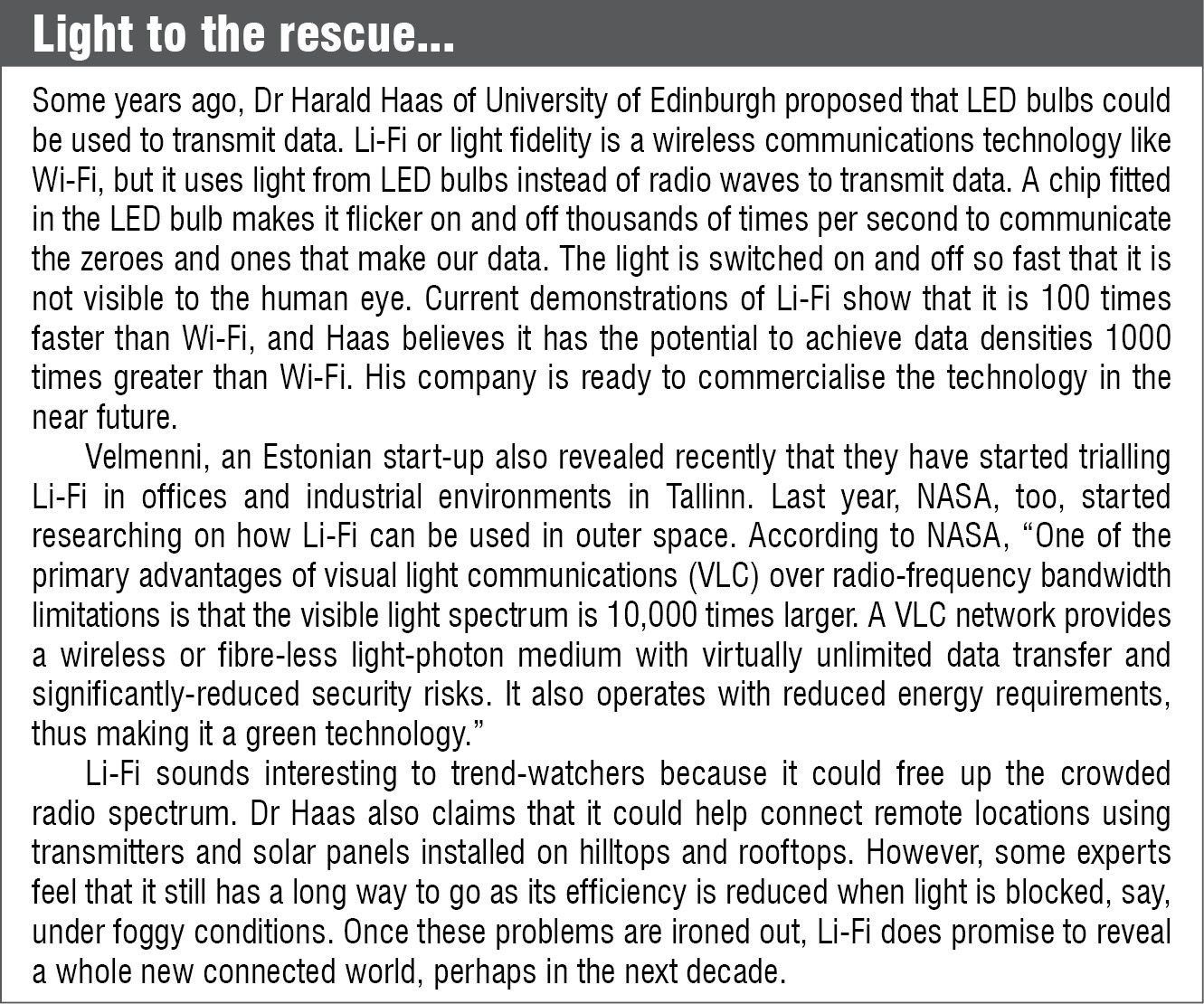
One of its divisions, O3B Maritime, has been attracting attention of late, with its interesting offering for improving connectivity on ships. Although satellites have long been used for mobile connectivity on ships, these have been problematic because there are black spots on oceans, which are not covered. Plus, when the ship changes direction, it takes some time to link up with the satellite network again, all of which tends to irritate customers with frequently-interrupted connectivity.
To avoid this, O3b’s satellite beams follow the ship on its normal route, so that the ship is always maintained within the beam centre. O3b receives latitude/longitude updates on two-hour intervals via in-band or out-of-band channels, and beam-tracking updates in real time if the ship has to change course.
Inmarsat. An early example in this space, Inmarsat serves a limited set of customers for high-bandwidth applications, using LEO satellites. It is now readying its next-generation constellation, Global Xpress, which promises to remove the black spots in ship-to-shore communications, and ensure reliable, high-speed broadband connectivity to ships.
Inmarsat is working with Rolls Royce on their autonomous, cargo-carrying drone ship project, and with Ericsson to facilitate sharing of cargo, logistics and vessel-operational data to help streamline the maritime supply chain. You could think of this as something like a maritime extension of the Internet of Things.
Mobile might continue to rule
“The telecommunications landscape is replete with limited successes of several innovative satellite based communication systems including Iridium, Teledesic and Globalstar. It may be noted that consistent with market needs and technologies available at that time, their goals were comparatively modest—providing basic voice capabilities to customers. The business model for these initiatives broke down since competing mobile systems provided lower-cost alternatives, albeit allowing selective coverage instead of universal coverage.
“The claim of current satellite based initiatives like SpaceX and OneWeb—that cost structures have changed, allowing viability of satellite based systems—is untenable, since the corresponding cost structure of competing mobile systems has also significantly changed,” says Dr Borkar.
He explains that the large number of low-orbit satellites needed, with corresponding complexities and costs for management, make the business models of OneWeb and SpaceX somewhat questionable.
Other blocking factors include discrepancies in frequencies of operation, non-viability of real-time and interactive applications as well as high-bandwidth data applications due to limited capacity and bandwidth issues, and political differences and regulatory issues between different countries.
Dr Borkar adds, “These satellite based systems cannot compete with mobile systems, with their range of capabilities at different price points. This gives significant competitive advantages to different generations of mobile systems, from 2G to 5G. Clearly, there is a market for bicycles as well as cars in the telecommunications business.”
Dr Borkar’s strong faith in mobile systems is rooted in constant innovations, therein. Evolution of mobile systems, especially 2G Global System for Mobile (GSM) communication, 3G Wideband Code Division Multiple Access (WCDMA)/ High-Speed Packet Access (HSPA), 4G LTE and 5G Next-Generation Networks (NGNs), are illustrations of continuous innovation for providing viable solutions to evolving market needs. Advances include Cooperative Multi-Point (CoMP) systems, multiple-input-multiple-output (MIMO) antennae, cloud based service creation and network management, and operations at extremely-high frequencies.
5G Wireless network is being positioned very well for meeting the advanced needs of the market in the 2020+ time frame, including mobile multimedia and differentiated customer experience. These include ultra-high-definition (UHD) video, everything connected, sensor based M2M communications, smartcities, ubiquitous computing, real-time and cloud based services and instantaneous communication regardless of distance.
Coming to the question of how this helps in universal connectivity, Dr Borkar explains, “Mobile systems are scalable and can provide a range of viable options from low-cost voice services to extremely-high-bandwidth advanced services.
“5G NGN specifically is being designed to operate all the way from the lower frequency range of the 3G/4G spectrum in the 700MHz range to as high as 100GHz frequencies. Using a range of mobile systems including macrocells, microcells and picocells, it is well-positioned to provide selective as well as universal geographic coverage across the globe.
“In fact, due to advantages of seamless handovers, pico or femto cells are expected to be a better option than the currently ubiquitous Wi-Fi systems, especially for mobile devices. Wi-Fi has had its days, since nomadic access from devices like laptops without automatic handover to the mobile network has been the market norm.”
He adds, “There are applications where base stations based terrestrial networks are not feasible, for example, over the ocean, remote locations, high mountains and so on. For such niche markets, it is likely that SpaceX and OneWeb will combine and provide viable solutions.”
Eyes on television white-space
Another trending technology in this space is the utilisation of television white-space. From Google and Microsoft to indigenous companies like Saankhya Labs, and various universities including Indian Institutes of Technology (IITs), researchers are beginning to believe in the white-space approach to connecting areas where traditional broadband is not feasible.
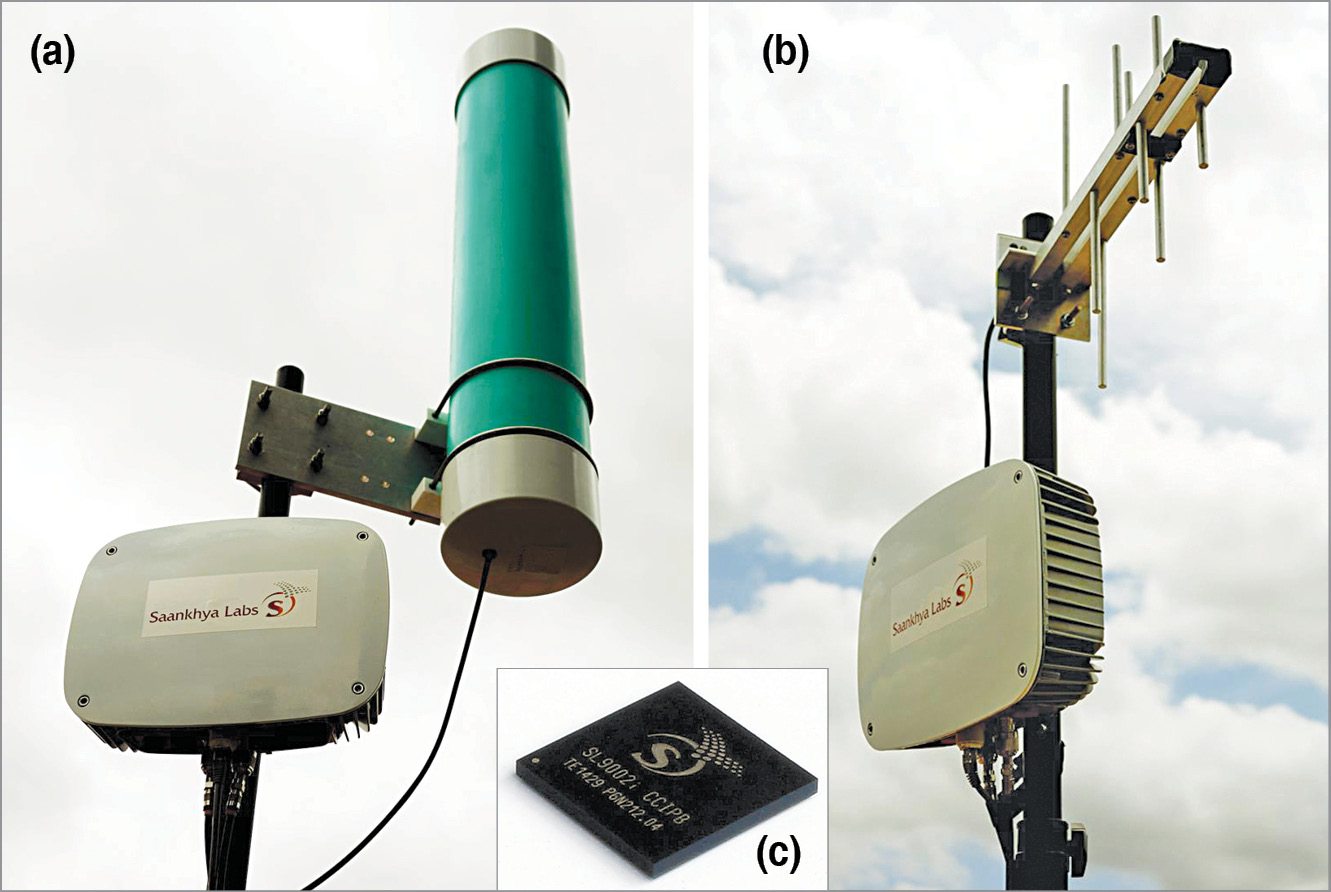
White-space refers to the gaps left by television networks. Usually, television networks leave gaps between channels for buffering purposes, leading to some unused frequencies in the wireless spectrum. This space is similar to what is used for 4G, and can therefore be effectively used to deliver broadband Internet. White-space broadband is somewhat like Wi-Fi, just that it can travel a much longer distance of approximately 10 kilometres.
“The unused TV spectrum in the ultra-high-frequency (UHF) band, called white-spaces, has very good propagation characteristics, which makes it attractive for long-range communications at low power. These properties make this spectrum particularly attractive to provide affordable wireless broadband connectivity to large rural and remote areas, which are not served today.
“A single television white-space base station can reach households that are as far away as 5km to 10km, depending on antenna height. Bridging the broadband digital divide between rural and urban areas is a must have for the success of Digital India, and television white-space modems play a vital role here,” explains Vishwa Kayargadde, co-founder and chief scientist, Saankhya Labs.
You need special modems to use television white-space, and Saankhya Labs is a forerunner in this industry. Pruthvi is a semiconductor chipset developed in India by Saankhya Labs. It is a unique class of chip called software-defined radio (SDR), which allows the same hardware to be used for different types of wireless communication by loading appropriate software.
Pruthvi contains highly-specialised signal-processing central processing units (CPUs) and hardware engines designed by Saankhya from the ground up. These CPUs are very powerful and can perform tens of giga operations per second in a small silicon area while consuming low power, which allows broadband wireless communication to be performed by embedded software running on this chip.
Pruthvi SDR has been used in various applications, including UHD set-top boxes, television dongles, video-distribution/surveillance drones, satellite receivers and Saankhya’s Meghdoot base stations and user modems that provide rural broadband using television white-space.
Meghdoot is a complete VHF/UHF base station modem consisting of radio-front-end and baseband processing, powered by Pruthvi.
“Unlike other solutions powered by field-programmable gate arrays (FPGAs) and general-purpose digital signal processors (DSPs), Saankhya’s solution is the first television white-space modem to be powered by a communication system on chip (SoC). Also, being a designed-in-India and made-in-India solution, we have several advantages besides easy access to the local market,” says Kayargadde.
The company is currently performing pilot tests of their solution at various locations in India, in collaboration with various IITs. Unlike the USA, the UK, Singapore and several other nations, India is yet to release television white-space spectrum for unlicensed access. It is expected to be released in the near future. Until that spectrum is made available for unlicensed access similar to the Wi-Fi spectrum, large-scale proliferation of television white-space devices is unlikely to happen.
However, television white-space is a very promising technology for connecting rural areas. It has been tested successfully in several university campuses and districts across the world, after Microsoft, BBC, BT and Nokia launched a consortium to support the project in 2011.
Microsoft 4Afrika is also betting big on white-space technology to connect interior regions of Africa, and so is Google.
Kayargadde believes that it will do wonders for India, too, even better than balloons or drones. He says, “Television white-space modem technology can be used to provide connectivity between any two points on the Earth or in the air, like a balloon or a drone. However, in the Indian context, unlike Project Loon, in one of the deployment scenarios proposed, the television white-space modem technology could effectively provide last-hop wireless connectivity from the nearest optical-fibre node to rural/urban areas.
“High-speed optical connectivity is being made available at most panchayats by National Optical-Fibre Network (NOFN) project, BharatNet. Connectivity to high-speed optical backbone makes the television white-space modem solution quite unique to enable Digital India.”
Building connectivity in Africa with digital BRCK
Bad weather, harsh terrain, poverty, name the problem and it is there in Africa. Yet, BRCK has found a way of providing connectivity to the remotest corners of this continent. And guess what their website proudly proclaims: “If it works in Africa, it will work anywhere!”
BRCK is basically a ruggedised router that can work under extremely-bad weather conditions and with very unreliable power supply.
According to the company, “It is a rugged, cloud-managed, full-featured modem/router with built-in fail-overs and programmable general-purpose input-output (GPIO) expansion. If there is a way for you to connect, BRCK will help you get up and stay up, no matter where you are.”
This makes it a perfect tool for connecting rural areas. In Africa, for example, BRCK is being used extensively to provide connectivity to rural schools, so children can have access to good educational content.
All you need to do to get BRCK up and running is insert a 3G data-enabled subscriber identity module (SIM) card and the device starts broadcasting Wi-Fi signals, enabling up to 20 devices to connect to the Internet. It works in more than 140 countries.
In case you do not have a SIM, you can opt for BRCK vMNO for global connectivity without SIM cards. There is an external GSM antenna port, which helps improve reach along the edge of a signal range. The battery, which can be charged using solar power, car battery, computer or regular power source, lasts for eight hours in full-power mode and much longer when used in low-power mode.
Plus, the robust BRCK system is designed as a platform that you can build on. You can write your own custom software for it through the application programming interface (API), connect sensors and other hardware through its Arduino-compatible GPIO ports, upgrade the 4GB onboard storage and do much more.
The most interesting part is that BRCK can be managed on the cloud. So this was, say, a non-profit organisation somewhere in New Delhi can install BRCK in a school in a Himalayan village, remotely manage its settings, push content and apps to it, among others.
Innovative devices to extend the reach of BharatNet
India is also gearing up to the connectivity challenge. We are aware that the current government is committed to take broadband connectivity to all 250,000 villages. While BharatNet, the Rs 720 billion NOFN, will be the backbone of the project, private and government-funded companies are simultaneously developing appropriate devices to improve last-mile connectivity. Kayargadde explained one scenario using television white-space to us earlier.
Wi-Fi products launched by Centre for Development of Telematics (C-DoT) in July 2015 are also good examples of this trend.
One device is a long-distance Wi-Fi system, which can solve connectivity issues in rural areas, hilly terrain, highways, tunnels, dense forests and others.
The other is a solar-powered Wi-Fi device, which will reduce dependence on grid power. It has also developed a smart green power supply solution that can make broadband solutions self-sustainable.
These cost-effective solutions help improve the reach of BharatNet, beyond panchayats, to the remotest corners of the country.
Indeed, it is heartening to learn of such efforts closer home, because universal connectivity is not something we can distance ourselves from, and watch the world develop. It is a real problem faced by real people, in our own country, and requires each of us to empathise with the situation and do our bit, as engineers, entrepreneurs, philanthropists or volunteers.
While signing off, Dr Borkar leaves us thinking about how economics matters at the grassroot level. He says, “Primary issues for a product or service to customers are affordability and capabilities that can be provided at that price-point to consumers. The goal of any commercial enterprise is to make profit. For providing the Internet to customers, currently price-points are higher than what almost two-thirds of the people can afford.
“Although making universal broadband Internet available to all may be a laudable goal, economic reality dictates the imperative of providing scalable and affordable Internet with a range of prices and corresponding performance and capabilities.
“High tele-density of 2G GSM wireless system in India is a prime example of a basic voice technology being priced within the buying power of most people. Unless availability of the Internet is considered a fundamental right with significant support by the government, universal broadband Internet connectivity will stay a dream.”
Janani Gopalakrishnan Vikram is a technically-qualified freelance writer, editor and hands-on mom based in Chennai


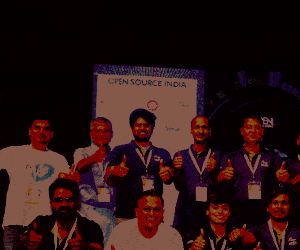








So much tech so much connectivity..but please tell me whether this too much wifi and 4G exposure are good for health or not